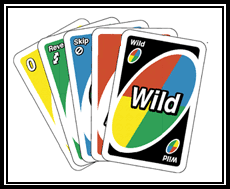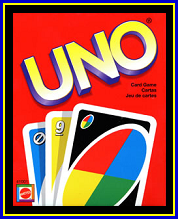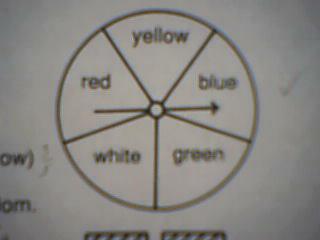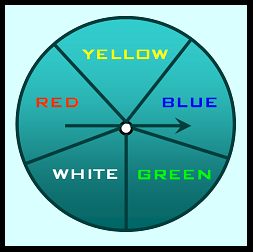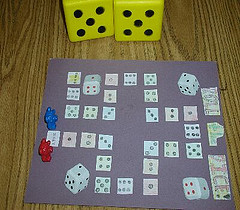E.) if you spin the spinner once, what is the probability that it will stop on A?
Answer: if you spin the spinner once, the probability of it stopping on A is 2/4
FRACTION=2/4
PERCENT=50%
 A.) If you spin the spinner once, what is the probability that it will stop on B?
A.) If you spin the spinner once, what is the probability that it will stop on B?
Answer: if you spin the spinner once, the probability of it stopping on B is 1/4
FRACTION=1/4
PERCENT=25%
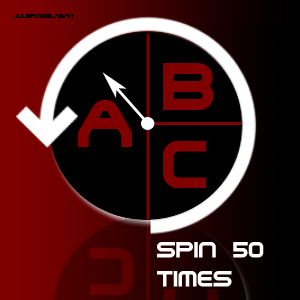
T.) If you spin the spinner 50 times, about how many times would you expect it to stop on A?
Answer: If you spin the spinner 50 times, the chances of it stopping on A every time is, 50%
Expressing as a fraction: 24/50 or 1/2
As a PERCENT : 50%

Y.) If you spin the spinner 80 times, about how many times would you expect it to stop on C?
Answer: If you spin the spinner 80 times, the chances of the spinner stopping on C every time is ,25%
Expressing as a fraction: 20/80 or 1/4
As a PERCENT: 25 %
HOW I GOT MY ANSWERS....
first of all, make the spinner
even. so continue the line that divides b and c across so you won't get confused.

*E*
TO GET THE FRACTION
2/4 or 1/2
P.O (possible outcomes) OVER T.P.O. (total possible outcomes)
In this case the total possible outcomes would be 4. The possible outcome would be 2 because there are two A's in the spinner.You get 2/4 but you have to simplify it. So you get 1/2.
TO GET THE PERCENT....
1 divided by 2 or two divided by 4 = 0.5
you then, multiply 0.5 by 100 and it will give you 50. 50 is your percent. just add the % symbol at the end. 50%
*A*
To get the fraction....
you put the possible outcome which is 1 because there is only one B in the spinner, over the total possible outcome which is 4. You don't have to simplify this one.
1 = Possible Outcome
________________
4 = Total Possible Outcome
To get the Percent....
Divide 1 by 4 and you'll get 0.25.
multiply 0.25 by 100 and you'll get 25 %
*T*
To do this question, you would put the total possible outcome which is 50. because what were trying to figure out, is how many times will the spinner stop on a when we spin it 50 times?. You would have to have the original possible outcome and the total possible outcome which is 2/4.
Steps......
?/50 2/4
step one = divide the denominators. 50 divided by 4 = 12.5
step two = take 12.5 and multiply it by the original possible outcome. 2 x 12.5 = 25
then you get your other numerator which is 25 so. the answer would be, If you spin the spinner 50 times it would stop on letter a 25 times.
25/50
You also have to simplify it. so it would be 1/2 and you get that by diving the numerator by the denominator and multiplying it by 100.
*Y*
For this question you do the same thing with the last question. You put 80 as your total possible outcome and you take your original t.p.o and p.o and divide 80 by the original T.P.O. which is 4 and you get 20 multiply twenty by the original P.O. and you get 20
if you spin the spinner 80 times the arrow would stop at c 20 times.
20/80
simplify = 1/4
MY OWN QUESTION......
You're friend wants to give you some stickers. It's in a bag so you have to reach in and take some. In the bag, there are 15 spongebob stickers 50 mickey mouse stickers 5 cinderella stickers and 45 smiley faces stickers. What kind of sticker do you think you would have in your hand by the time you pull it out of the bag?
15 + 50 + 5 +45 = 115
your TPO would be 115
Spongebob : 15/115 11.5%
Mickey Mouse : 50/115 43.47%
Cinderella : 5/115 4.3 %
Smiley Faces : 45/115 39.13 %
By the time you pull your hand out of the bag you would have a Mickey Mouse sticker because it has the most.........

